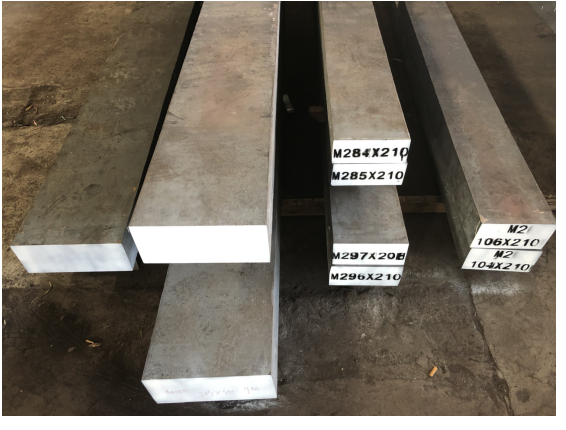SKH-51 high speed steel overview:
Also known as wind steel or front steel, it means that it can harden even when it is cooled in air during quenching, and it is very sharp. It is an alloy steel with a complex composition containing carbide-forming elements such as tungsten, molybdenum, chromium, vanadium, and cobalt. The total amount of alloy elements is about 10 to 25%. It can still maintain high hardness under the condition of high heat generated by high-speed cutting (about 500 ℃), HRC can be above 60. This is the main characteristic of high-speed steel-red hardness. After quenching and low temperature tempering, the carbon tool steel has a high hardness at room temperature, but when the temperature is higher than 200 ℃, the hardness drops sharply, and the hardness has fallen to a similar level to the annealing state at 500 ℃ , Completely lost the ability to cut metal, which limits the use of carbon tool steel for cutting tools. High-speed steel, due to its good red hardness, makes up for the fatal shortcomings of carbon tool steel and can be used to make cutting tools.
The heat treatment process of high-speed steel is relatively complicated, and it must go through a series of processes such as annealing, quenching and tempering. The purpose of annealing is to eliminate stress, reduce hardness, make microstructure uniform, and facilitate quenching. The annealing temperature is generally 860 ~ 880 ℃. During quenching, it is generally divided into two stages due to its poor thermal conductivity. First preheat at 800 ~ 850 ℃ (so as not to cause large thermal stress), and then quickly heated to the quenching temperature of 1190 ~ 1290 ℃ (the temperature of different brands in actual use is different), after oil cooling or air cooling or gas cooling. All factories use salt furnaces for heating, and vacuum furnaces are now widely used. After quenching, a part (about 30%) of retained austenite is not transformed into martensite due to the internal structure, which affects the performance of high-speed steel. In order to transform the residual austenite and further improve the hardness and wear resistance, generally 2 to 3 tempers are carried out, the tempering temperature is 560 ℃, and each time it is kept for 1 hour.
SKH-51 uses:
Used to manufacture various cutting tools. Such as turning tools, drill bits, hobs, machine saw blades and demanding molds.




